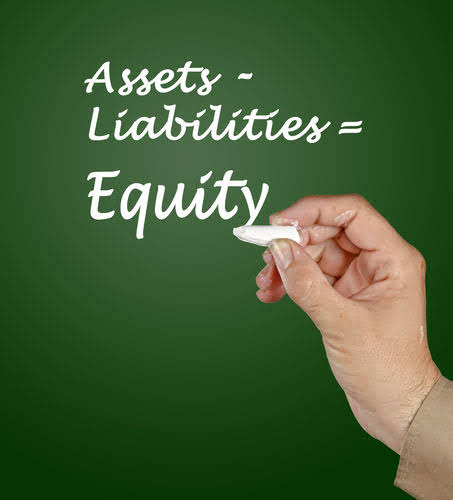Content

Off-balance sheet financing is a legitimate, legal accounting practice, as long as the rules surrounding it are followed. The use of off-balance sheet items will not affect the reports, and therefore not affect the funding potential for the business. Off-balance sheet financing has some benefits as it does not negatively affect the financial overview of the company. Loans will generally negatively affect a company’s reports, making investors less likely to take an interest in the business. The account is now ready for February’s entries to be made.
If the journal accounting entry amount doesn’t match your bank statement, and you close it out, then the software will adjust the opening balance equity account balance. A common reason for a lingering balance on your opening balance equity account includes bank reconciliation adjustments that weren’t done properly, leaving an opening balance.
Managing Opening Balance Equity For Presentable Balance Sheets
Read our guide on Where to take your learning next for more information. Enrol and complete the course for a free statement of participation or digital badge if available.
This confuses many people who see a balance for an account they don’t even remember making. Harold Averkamp has worked as a university accounting instructor, accountant, and consultant for more than 25 years.
Academy Of Accounting And Financial Studies Journal Print Issn: 1096
It shows the changes to the shares and reserves of the company ov… A business which uses factory profit may also value its inventory of finished goods on a cost plus % basis – this creates true compa…

The balance brought forward will begin the succeeding accounting cycle and be recorded accordingly on a new page. Account balances refer to the money tucked away in an account. This applies to all amounts present in the account at a given point in time, including negative sums. The account balance is the remaining balance left after both credits and debits are factored in. You balance your account by introducing your balancing figure on the side the smallest amount. This figure should be your balance carried down at the end of the period and would be brought down at the start of the next period. The balances carried down figures are those that affect the balance sheet.
What Is Off Balance Sheet?
The depth and extent of internal control is the need to obtain confidence in the accuracy of the information, which is formed by the subsystem of managerial off-balance sheet accounting and is provided to the management of the enterprise and its owners to make management decisions. A bank may have substantial sums in off-balance sheet accounts, and the distinction between these accounts may not seem obvious. For example, when a bank has a customer who deposits $1 million in a regular bank deposit account, the bank has a $1 million liability. If the customer chooses to transfer the deposit to a money market mutual fund account sponsored by the same bank, the $1 million would not be a liability of the bank, but an amount held in trust for the client . If the funds are used to purchase stock, the stock is similarly not owned by the bank, and do not appear as an asset or liability of the bank.

Study the table below and then read the following instructions on balancing. The cash in hand, a debit balance at 1 June, is your starting capital in this instance, being the sole asset and property possessed by the business on this date.
If you are a WordPress user with administrative privileges on this site, please enter your email address in the box below and click “Send”. You will then receive an email that helps you regain access. Achieving IFRS off-balance-sheet treatment in trade receivables securitizations. In later Balancing off Accounts exercises, it will be seen that business property in money is normally only part of the proprietor’s capital. The corresponding and entry in the Cash Book should be posted to the Ledger account. You are required to record the transaction, balance off and prepare a Trial Balance.
Block Technical Data
You must balance off an account by taking a figure to the financial statements. All ledger accounts must be balances at the end of a period. Revenue and expense accounts do not have a brought down balance, since they are closed off and the figure transferred to the income statement. Other types of accounts use a balance brought down in order to determine the opening balance of the account in the subsequent trading period. Some companies may have significant amounts of off-balance sheet assets and liabilities.
- A fresh accounting cycle for permanent accounts is usually started by the balance brought forward from the preceding period.
- Off-balance sheet financing is a form of financing in which large capital expenditures are kept off of a company’s balance sheet through various classification methods.
- This is because the figures for revenue, expenses and drawing, when they are aggregated and offset in the income statement, to adjust the capital accounts.
- You will probably examine the accounts at the end of the month.
- If you see a message asking for permission to access the microphone, please allow.
- Another way to measure the accuracy at any time is to subtract the total of the debit side from the credit side.
Because the balances in the temporary accounts are transferred out of their respective accounts at the end of the accounting year, each temporary account will have a zero balance when the next accounting year begins. This means that the new accounting year starts with no revenue amounts, no expense amounts, and no amount https://www.bookstime.com/ in the drawing account. Under previous accounting rules both in the United States and internationally , operating leases were off-balance-sheet financing. Under current accounting rules , operating leases are on the balance sheet. Financial obligations of unconsolidated subsidiaries may also be off-balance sheet.
Operating Lease
Usually, it presents as a discrepancy showing the difference between column A and column B. This number is objectively the most vital point in an account since it is where most businesses see their strength or weakness. Some of the factors to consider in balancing accounts are company capital, income, expenses, assets, and even liabilities. Currently, off-balance accounts are used in many countries, they have different names (off-balance, special, memorial, etc.), but are united by the fact that they are outside the billing system of accounting records designed to reflect elements of financial statements . However, there is still no sustainable list of information that should be reflected on off-balance sheet accounts. Each country has its own requirements for the mapping of off-balance sheet objects, corresponding to the general economic situation in the country, legislative regulation of accounting issues, openness of financial information and other legal, economic and social factors. The results of the study indicate that many countries use off-balance accounts, each country has its own criteria and approaches to the fact records and transactions on them.
- Instead of zeroing out like temporary accounts, figures in permanent accounts are transferred over to the succeeding term.
- The corresponding and entry in the Cash Book should be posted to the Ledger account.
- The total of the payments ($2773.00) before balancing may be noted in pencil but is not inked-in as a permanent feature.
- (We credit expenses only to reduce them, adjust them, or to close the expense accounts.) Examples of expense accounts include Salaries Expense, Wages Expense, Rent Expense, Supplies Expense, and Interest Expense.
- This demonstrates for every transaction we have followed the basic principle of double-entry bookkeeping – ‘ for every debit there is a credit ’.
- Also, it assists companies in complying with the balance requirements and avoiding any penalties.
Q7 What kinds of errors would cause differences in the trial balance. Off-balance accounting should expand the information capabilities of the accounting system. Correctly formulate the definition of the subject of off-balance sheet accounting means to indicate its place and role in the accounting system and determine the scope of its application.
Include in the backup a brief narrative of the reasons for the write-off, evidence of multiple collection attempts, and the account number that will fund the write off. So, accounting and methodological support for the off-balance sheet accounting in a modern information system of the enterprise requires complex improvement in order to form an integrated accounting and control subsystem for generating accounting information on the off-balance accounts. A continuous accounting process built on a unified basis within the enterprise is designed to provide managers at various levels with the information necessary for effective management. One of the functions of accounting is the control, which is to ensure the implementation of control over the activities of the enterprise for the rapid elimination of identified deviations and errors and the subsequent selection of the correct direction of its conduct. This function provides for monitoring the safety, availability and movement of the property of enterprises, the correctness and timeliness of settlements with the state and other business entities. The difference or balance on an account should never be left suspended in mid-air. In the case of the cash account, the balance will be entered as the last item on the credit side above the total, and then brought down below the debit total on the opposite side.

The company solves its financing problem by using a subsidiary or special purpose entity , which purchases the hardware and then leases it to the company through an operating lease while legal ownership is retained by the separate entity. The company must only record the lease expense on its financial statements. Even though it effectively controls the purchased equipment, the company does not have to recognize additional debt nor list the equipment as an asset on its balance sheet. When you have finished, check that credits equal debits in order to ensure the books are balanced. Another way to ensure that the books are balanced is to create a trial balance. This means listing all accounts in the ledger and balances of each debit and credit. Once the balances are calculated for both the debits and the credits, the two should match.
The one-word description for each entry, to the greatest possible extent, is important; it serves to identify the opposite and corresponding double entry, which is normally in another ledger. Note the one-word description for all the credit entries, as well as the complete absence of the words “cash” and “paid” on this side. This is because all these entries refer to cash payments. During the month of June, all your business dealings are for cash. The details of your trading transactions are listed below. In accounting courses, the cash account is usually first explained as part of the ledger system.
Introduction
If the double entry has been carried out, the total of the debit balances should always equal the total of the credit balances. Furthermore, a trial balance forms the basis for the preparation of the main financial statements, the balance sheet and the profit and loss account. At the end of the financial accounting period a business must balance its books – the first step to summarizing and analyzing the financial position and income of the business.
Focal Points When Preparing A Cash Account
Goods and merchandise bought by the business to be re-sold are called purchases. Cash takings or cash sales refer to the normal and continuous “across the counter” sales of the small retailer.

